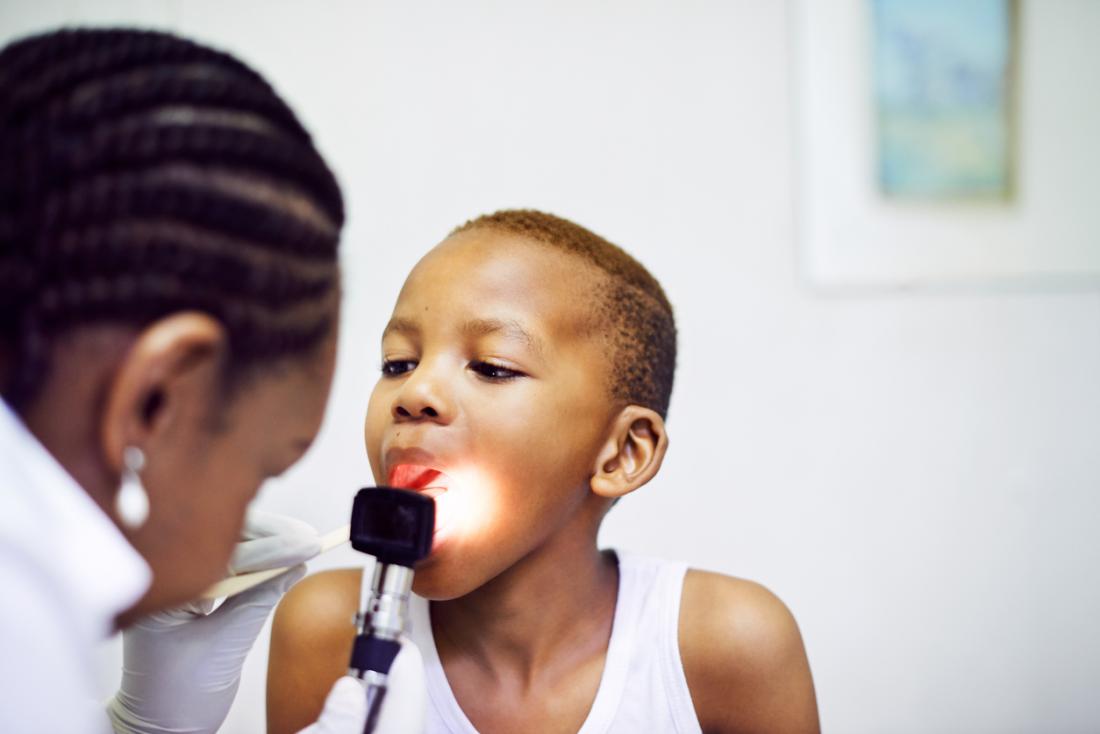Stomatitis is a type of mucositis, a condition defined as pain or inflammation of the mucous membrane.
Mucositis is a relatively common side effect of chemotherapy and sometimes radiotherapy. It can affect the inside of the lips, cheeks, gums, tongue, and throat.
Stomatitis that reoccurs and includes mouth ulcers is called recurrent aphthous stomatitis (RAS) and is the most common disease affecting the mouth area, with around 5-25 percent of the United States population affected in some way.
Different types of stomatitis

Canker sores usually develop on the inside of the lips or cheek.
There are two main types of stomatitis:
Canker sores
These are also known as aphthous ulcers and are part of the most common cause of stomatitis. The sores are pale white or yellowish in color with a red outer ring.
Canker sores can develop singly or in a cluster and usually occur on the inside of the lips or cheek, or on the tongue.
Canker sores lead to acute, temporary pain. In minor cases, which are the most usual, the ulcers heal within 4-14 days. In more severe cases, which account for about 1 in 10 of all cases of stomatitis, the sores can last up to 6 weeks.
Anyone can get canker sores, although women and people in their teens and 20s are more likely to experience them. They can run in families but are not contagious.
Cold sores
Cold sores are small, painful, fluid-filled sores that usually occur on or around the lips near the edge of the mouth. Caused by the herpes virus (HSV), the condition is also known as herpes stomatitis.
A person may experience a tingling or burning sensation before the sore appears, as well as tenderness. Cold sores dry up and crust over with a yellow-colored scab.
Cold sores tend to last for around 5-7 days and can keep coming back. They are also very contagious.
Stomatitis can be broken down into different categories, depending on which area of the mouth is affected:
- cheilitis – inflammation of the lips and around the mouth
- glossitis – inflammation of the tongue
- gingivitis – inflammation of the gums
- pharyngitis – inflammation of the back of the mouth
Causes
Stomatitis can be caused by a variety of different factors, which may overlap with each other at the same time. Often it will be due to injury, infection, allergy, or skin disease.

Biting the inside of the cheek or lip can cause stomatitis to occur.
The most common causes are:
- trauma from ill-fitting dentures or braces, biting the inside of the cheek, tongue, or lip, and surgery
- chemotherapy treatment for cancer
- viral infection, such as herpes
- yeast infection, such as thrush
- any condition associated with xerostomia, or dry mouth
- smoking or chewing tobacco
Other examples include:
- bacterial infections
- sexually transmitted infections
- weakened or deficient immune system
- irritation from strong chemicals
- stress
- certain diseases, including Behcet’s disease, Crohn’s disease, and lupus
- medications, including sulfa drugs, anti-epileptics, and some antibiotics
- nutritional deficiencies
- allergic reactions
- burns caused by hot food and drink
It is important to identify the cause of stomatitis in order to treat it properly.
Symptoms
Stomatitis often results in pain, stinging, and soreness. Each person may experience different symptoms. These can include:
- mouth ulcers with a white or yellow layer and red base, usually inside the lips, cheek, or on the tongue
- red patches
- blisters
- swelling
- oral dysaesthesia – a burning feeling in the mouth
- lesions that heal in 4-14 days and often recur
Diagnosis
Diagnosis will depend entirely on what is causing the stomatitis. Relevant investigations include a physical examination, as doctors can learn a lot by looking at the appearance and distribution of ulcers.

A physical examination can help the doctor diagnose stomatitis.
Other tests might include:
- swabs, both bacterial and viral
- tissue scrapings or swabs for fungal infections
- biopsy, or the removal of cells or tissue for further study
- blood tests
- patch tests to identify allergy
A doctor will also look at a person’s medical history to see if a current or previous medication has caused the stomatitis. The doctor will also ask a person about their sexual history and whether they have ever smoked.
Other conditions can cause stomatitis, so investigation and diagnosis are vital to ensure the doctor gives the correct treatment.
Treatment
Treatment for stomatitis will depend on the cause. Treating the root cause is important for stomatitis caused by the following:
- Allergy: If caused by an allergic reaction, then the doctor will try to identify what the allergy is and look to eliminate its effects.
- Infection: Stomatitis caused by an infection may require specialized treatment and medications depending on what the infection is.
- Disease: If a specific disease causes stomatitis, a doctor will aim to identify this and treat it.
- Nutritional deficiency: A doctor can identify and address nutritional problems with medication or diet.
Topical treatment
Topical treatments applied directly to the skin have been found to help lessen the pain and speed up healing.
Types of topical treatment include:
- Topical corticosteroids: Often a rinse, these aim to eliminate symptoms to allow the person to eat, drink, and speak without pain or discomfort.
- Topical antibiotics: These are usually in gel or rinse format and have anti-inflammatory and antibiotic properties.
- Topical anesthetics: These are numbing medications, mostly available by prescription that people can apply directly to the sores for temporary pain relief.
- Kanka: An over-the-counter product that provides a barrier layer to mouth sores, giving temporary pain relief.
Prevention
There are basic precautions that people can take to try and stop stomatitis returning, such as:
- using an antiseptic and non-alcoholic mouthwash
- treating chronic dry mouth
- using a soft toothbrush
- maintaining proper nutrition and hydration
- receiving routine dental care
Let’s block ads! (Why?)





